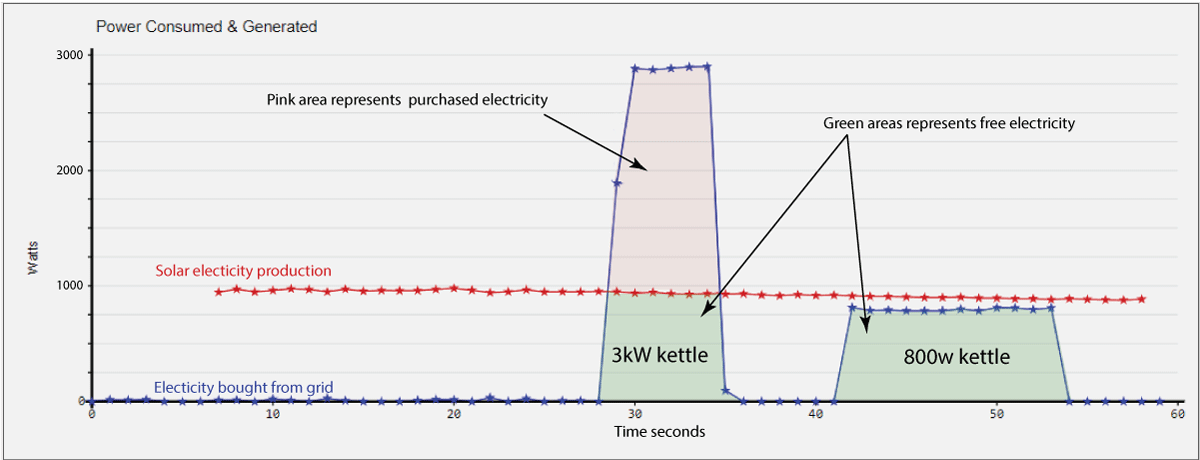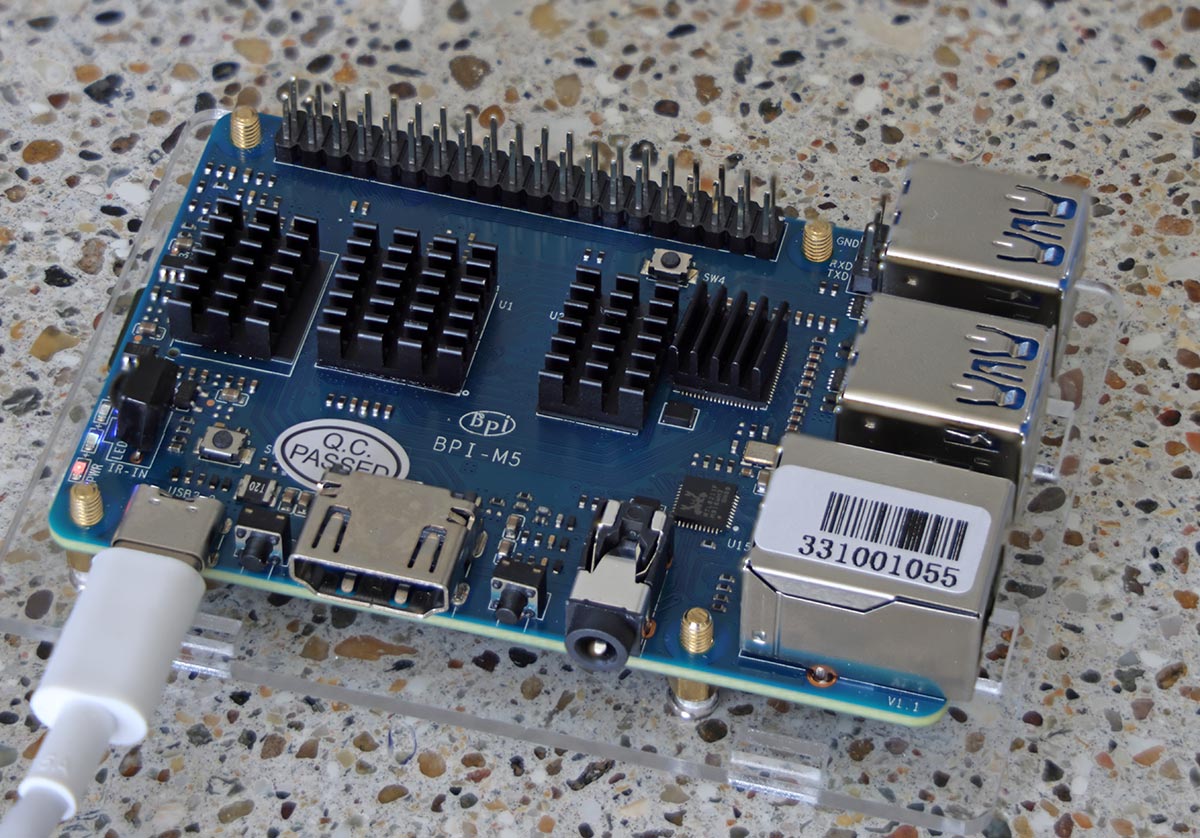Comraich smart home
The Concept:
We produce our own solar electricity (& wind soon) and my aim was to manage our energy consumption in order to maximise the use of this free energy, minimise the purchase of expensive grid electricity and save money.
We don't get payments for exporting electricity to the grid so it's important to make the most of our renewable investment.
In our home, all items that consume significant amounts of electricity are allocated a priority. However, that priority is adjustable depending on in-house conditions. All this is managed by a credit-card-sized SBC (a Banana Pi BPi-M5) and multiple Arduino microprocessors with attached sensors feeding live data back to the Banana Pi and it's database.
Importantly, these all run on just a couple of watts, far less than a typical home computer/laptop so they can run 24/7 with no impact on home consumption.
The Kettle example:
Lets say our solar panels are outputting 1000 watts (1kW) of electricity. A modern kettle can consume as much as 3kW. When this kettle is switched on we have to buy 2kW from the grid.

We replaced the standard 3kW kettle with an 800 watt caravan style kettle. As you may see from the real-time graph above, all the energy used by our 800w kettle was free, although boiling took a little longer. So what? (excuse the awful pun!).
Kettles are high consumption units, frequently used and the water in them frequently, and unnecessarily, boiled many times. It was an obvious area for us to improve our energy management.
This simple exercise needs no fancy electronics, computer or sensors. To help, all you need is some sort of energy usage display, e.g. an Owl energy monitor or a Smart-meter display.
Priorities example:
We prioritise which, and when, 'electrical units' are on/off. The essential items, e.g. water pressure pump, will always operate but the 1.5kW burn-water pump is programmed to operate only when there's sufficient 'free' electricity.
But, this could see the water tank run dry so when sensors detect the level is less than 30%, the pump will operate to keep the level at 30%, even if it means buying off the grid. When there's enough 'free' electricity available, the pump will fill the water tank to 100%.
In reality, the pump rarely buys off the grid.
And whilst pumping, should another, higher priority item start-up, the water pump will stop and wait for the next opportunity to pump with free power.
Energy Diversion:
When you produce your own electricity, how do you divert energy otherwise lost to the grid and ensure it's used efficiently in your home?
This is a vital part of good energy management and is a topic discussed in full => Energy Diversion
Monitoring (app):
View and control your energy management on your computer/mobile devices - make your own app. There is no need to involve third party companies, keeping it in house offers better security and is more energy efficient.
Priorities example:
We prioritise which, and when, 'electrical units' are on/off. The essential items, e.g. water pressure pump, will always operate but the 1.5kW burn-water pump is programmed to operate only when there's sufficient 'free' electricity.
But, this could see the water tank run dry so when sensors detect the level is less than 30%, the pump will operate to keep the level at 30%, even if it means buying off the grid. When there's enough 'free' electricity available, the pump will fill the water tank to 100%.
In reality, the pump rarely buys off the grid.
And whilst pumping, should another, higher priority item start-up, the water pump will stop and wait for the next opportunity to pump with free power.
Energy Diversion:
When you produce your own electricity, how do you divert energy otherwise lost to the grid and ensure it's used efficiently in your home?
This is a vital part of good energy management and is a topic discussed in full => Energy Diversion
Monitoring (app):
View and control your energy management on your computer/mobile devices - make your own app. There is no need to involve third party companies, keeping it in house offers better security and is more energy efficient.
